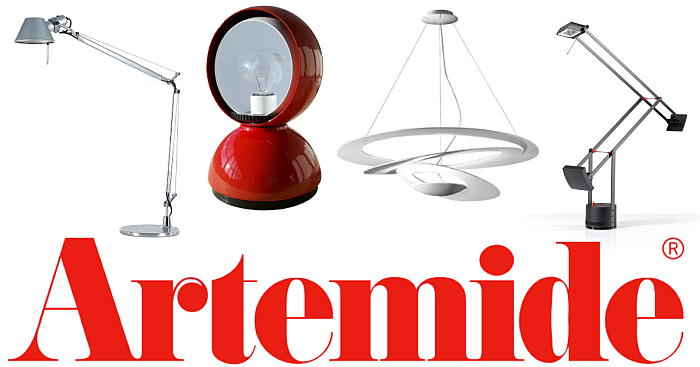The Historia Supellexalis: “A” for Artemide
Artemide
A Phaesporia; A bringer of light.
Arising in Milan at a time of great darkness in the Kingdom of Lombardy, Artemide’s original form, its Alfa form, was bequeathed to it by a man recorded as Sergio Mazza, and it was this Mazza, together with a young compagno bearing the name Ernesto Gismondi, who charged Artemide with the spreading of that Alfa light throughout the still dark domestic, commercial and civic spaces of the known worlds.
Although renowned, and celebrated, for its chastity, Artemide’s radiance has long stimulated some of the greatest creative minds; individuals who were so moved by the power and grace of Artemide’s lustre that they avowed all others1 to assist Artemide in its designated task of bringing light to the masses in a way that is practical, functional, meaningful and aesthetic, to make light a servant of all, individually and collectively, and who in doing so freely adapted Artemide’s Alfa form into a myriad new guises. Amongst the many, many, recorded, and oft celebrated, deeds of Artemide’s devotees, Michele de Lucchi and Giancarlo Fassina translated the astrological calculations of Claudio Tolomeo into freely positionable light; Enzo Mari and, again, Giancarlo Fassina, a loyal servant of Artemide, applied the principles of aggregato and in doing so made light modular and responsive; Gae Aulenti gave light human form, if in choosing that of the Greek warrior Patroclo she risked the rage of Artemide’s twin brother Apollo; while Vico Magistretti brought the celestial eclipse from the cold, vastness of space to the intimate warmth of the home.
And it was this same Magistretti who first introduced Artemide to furniture: a stackable, moulded fibreglass chair he formed in a single operation being much admired by Artemide, so much so that Artemide had it produced in large numbers and not only distributed it widely but employed it locally: Magistretti’s chair being used by both Artemide’s household of Amnisidean and Okeanon nymphs and also by Artemide’s colleagues Perse, Hecate and Selene, the latter of whom has become particularly associated with Magistretti’s chair.2
Though sworn to bring light to the masses, that first exposure to furniture ignited in Artemide thoughts of bringing the masses a physical comfort to augment the emotional comfort of light, thoughts of furniture increasingly dominating Artemide’s waking and sleeping moments, and thus when a man called Sottsass, a man known throughout all lands as a provocateur and fomentor, requested Artemide’s assistance with the distribution of the recently unearthed treasures of Memphis amongst the peoples of the earths, Artemide could not resist; not least because the furniture of Memphis radiated with a brilliance the world had never before seen and which appeared to place even Artemide’s lights in shade.
And although many were impressed with the Memphis treasures and people flocked in large numbers, and from far afield, to view them, only very few wanted such in their own homes; the greater majority being satisfied to look on in wonder and bewilderment, and had it not been for the obsession of the Germanic couturier Karl von Lagerfeld, Artemide’s cellars would be full of Memphis furniture to this day.3
That experience with Memphis cured once and for all Artemide of all thoughts of furniture, and since when Artemide has concentrated fully on light and seeking not only ever new forms for light, ever new expressions of light, but ever new technical and functional means and modes to its distribution and utilisation…..
…..à suivre
1. Whereas all avowed loyalty to Artemide, Artemide never demanded such and many devotees also gave of their time and service to others.
2. The association with Selene is largely based on the S form of the chair leg, a form which many see as an indication that Magistretti secretly developed the chair as a gift for Selene. However as Banaan et al have convincingly argued the S form is strictly structural and necessarily so.
3. It is recorded that (a) von Lagerfeld filled two of his many homes with Memphis treasures, and (b) such was his devotion to the colourful cacophony he resolved to dress himself exclusively in monochrome garments in reverence to Memphis’s chromatism. While (a) is unquestionably true, doubts persist as to the validity of (b) and it is repeated here simply in the interests of completion.
Tagged with: Artemide, Historia Supellexalis, light, lighting
